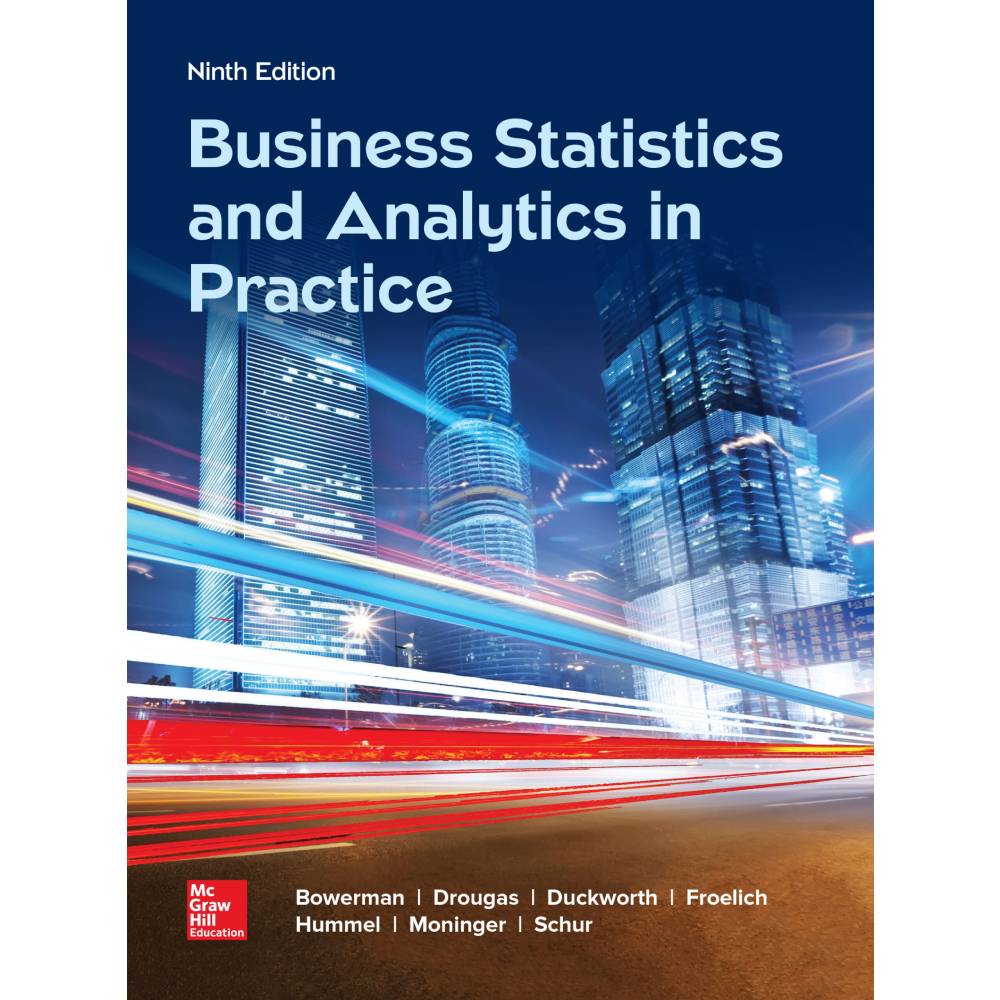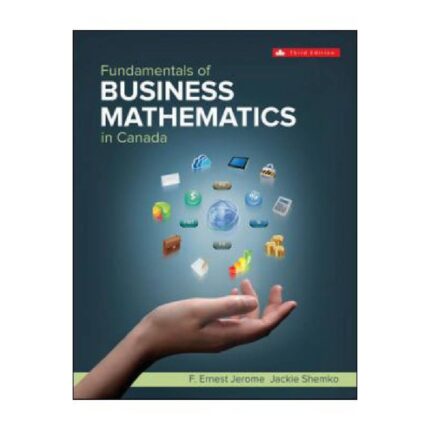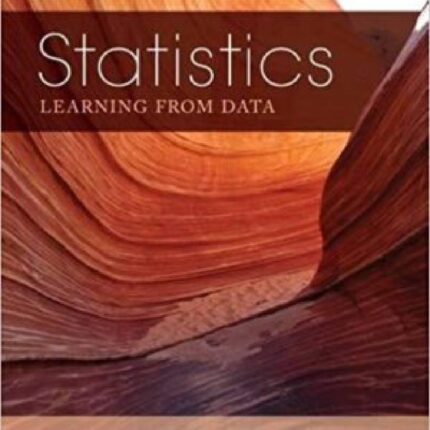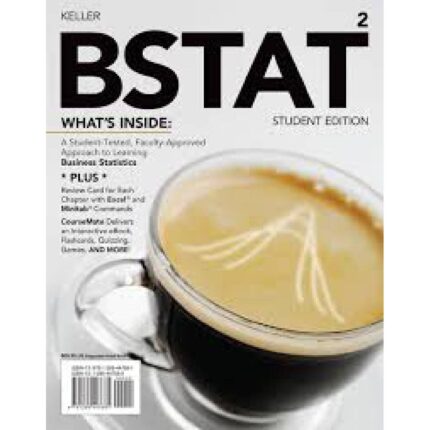Business Statistics And Analytics In Practice 9th Edition By Bruce Bowerman – Test Bank
Chapter 11 Statistical Inferences Based on Two Samples
1) An independent samples experiment is an experiment in which there is no relationship between the measurements in the different samples.
Answer: TRUE
Explanation: Different samples from the first population would give different values of the mean, and different samples from the second population would give different values of the mean.
Difficulty: 1 Easy
Topic: Comparing Two Population Means by Using Independent Samples
Learning Objective: 11-01 Compare two population means when the samples are independent.
Bloom’s: Remember
AACSB: Reflective Thinking
Accessibility: Keyboard Navigation
2) When testing the difference between two proportions selected from populations with large independent samples, the z test statistic is used.
Answer: TRUE
Explanation: This is because we can estimate the standard deviation via the two proportions.
Difficulty: 1 Easy
Topic: Comparing Two Population Proportions by Using Large, Independent Samples
Learning Objective: 11-04 Compare two population proportions using large independent samples.
Bloom’s: Remember
AACSB: Reflective Thinking
Accessibility: Keyboard Navigation
3) In forming a confidence interval for μ1 − μ2, only two assumptions are required: independent samples and sample sizes of at least 30.
Answer: FALSE
Explanation: The assumptions are independent samples, equal variances, and either sample sizes are large or the sampled populations are normally distributed.
Difficulty: 1 Easy
Topic: Comparing Two Population Means by Using Independent Samples
Learning Objective: 11-01 Compare two population means when the samples are independent.
Bloom’s: Remember
AACSB: Reflective Thinking
Accessibility: Keyboard Navigation
4) In an experiment involving matched pairs, a sample of 12 pairs of observations is collected. The degrees of freedom for the t statistic is 10.
Answer: FALSE
Explanation: Degrees of freedom is n − 1 = 12 − 1 = 11
Difficulty: 1 Easy
Topic: Paired Difference Experiments
Learning Objective: 11-03 Compare two population means when the data are paired.
Bloom’s: Apply
AACSB: Reflective Thinking
Accessibility: Keyboard Navigation
5) When comparing two independent population means, if n1 = 13 and n2 = 10, degrees of freedom for the t statistic is 22.
Answer: FALSE
Explanation: Degrees of freedom = n1 + n2 − 2 = 13 + 10 − 2 = 21
Difficulty: 1 Easy
Topic: Comparing Two Population Means by Using Independent Samples
Learning Objective: 11-01 Compare two population means when the samples are independent.
Bloom’s: Apply
AACSB: Reflective Thinking
Accessibility: Keyboard Navigation
6) There are two types of machines, called type A and type B. Both type A and type B can be used to produce a certain product. The production manager wants to compare efficiency of the two machines. He assigns each of the 15 workers to both types of machines to compare their hourly production rate. In other words, each worker operates machine A and machine B for one hour each. These two samples are independent.
Answer: FALSE
Explanation: This is a paired sample because both machines have the same operators.
Difficulty: 2 Medium
Topic: Paired Difference Experiments
Learning Objective: 11-02 Recognize when data come from independent samples and when they are paired.
Bloom’s: Analyze
AACSB: Reflective Thinking
Accessibility: Keyboard Navigation
7) In testing the difference between two means from two independent populations, the sample sizes do not have to be equal.
Answer: TRUE
Explanation: Each sample size needs to be large.
Difficulty: 1 Easy
Topic: Comparing Two Population Means by Using Independent Samples
Learning Objective: 11-01 Compare two population means when the samples are independent.
Bloom’s: Remember
AACSB: Reflective Thinking
Accessibility: Keyboard Navigation
8) In testing the difference between the means of two normally distributed populations using large independent random samples, the sample sizes from the two populations must be equal.
Answer: FALSE
Explanation: Sample sizes do not have to be equal to test the differences of the means.
Difficulty: 1 Easy
Topic: Comparing Two Population Means by Using Independent Samples
Learning Objective: 11-01 Compare two population means when the samples are independent.
Bloom’s: Understand
AACSB: Reflective Thinking
Accessibility: Keyboard Navigation
9) In testing the difference between the means of two normally distributed populations using independent random samples, the alternative hypothesis always indicates no difference between the two specified means.
Answer: FALSE
Explanation: The alternative hypothesis can be a difference or greater than or less than.
Difficulty: 1 Easy
Topic: Comparing Two Population Means by Using Independent Samples
Learning Objective: 11-01 Compare two population means when the samples are independent.
Bloom’s: Remember
AACSB: Reflective Thinking
Accessibility: Keyboard Navigation
10) In testing the difference between the means of two normally distributed populations using independent random samples, we can only use a two-sided test.
Answer: FALSE
Explanation: Using the critical value rules, we should use a two-sided test if the test is of no differences between the two samples. If we are looking at a greater than or less than difference, we would use a one-sided test.
Difficulty: 1 Easy
Topic: Comparing Two Population Means by Using Independent Samples
Learning Objective: 11-01 Compare two population means when the samples are independent.
Bloom’s: Remember
AACSB: Reflective Thinking
Accessibility: Keyboard Navigation













Reviews
There are no reviews yet.